
Tom Williamson
1989
Dana built approximately another 50 Schoenberg Guitars (about four batches). He was assisted by his third and final apprentice, Tom Williamson.
"I had experienced a rebirth of interest in the guitar in college and took lessons with Eric Schoenberg at the Music Emporium in Cambridge. At that time I built an OM-45 from a kit from Martin Guitars. Eric advised me to get into building guitars and around 1989 there was an opening for an apprentice at Dana Bourgeois' shop in Topsham, Maine. I moved to Maine in '89 to start a year-and-a-half apprenticeship, doing repair work. During this period, Dana and I intermittently shared a bench at the Martin factory, voicing Schoenberg guitars. I saw this period as a learning opportunity and really got into it". --the late Tom Williamson, Brunswick, Maine

Tom Williamson

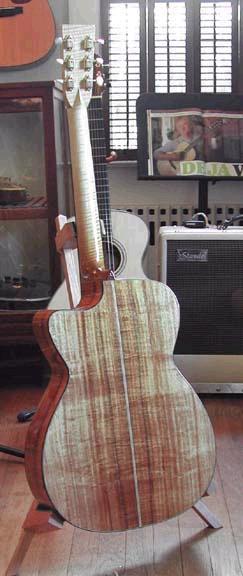
A 2002 Tom Williamson
'Soloist' in Koa,
utilizing an original Soloist Maple neck
(the 'backup' to the neck used on Jack Beck's D cutaway).
The majority of Soloists were built with Brazilian Rosewood. Schoenberg and Bourgeois acquired approximately 50 bookmatched sets of Brazilian backs from Dick Boak, who was running the "Woodworker's Dream" at Martin at the time. The wood had been rejected because it didn't meet Martin's thickness specifications, but was still beautiful old-growth Brazilian that deserved to be used. Another source was the purchase by Schoenberg and Bourgeois of a log of Brazilian that had been submerged in the Amazon River for many years. In addition, while Martin at this time was setting aside Bearclaw figured Spruce as being unconventional, Dana Bourgeois loved the look and sound, as did Dick Boak. As a result, many Schoenberg guitars featured Bearclaw tops.

Dana Bourgeois later elaborated on these notes to write his famous
"Tapping
Tonewoods".
Additional use of custom woods and features increased. Perhaps 10% of the Soloists were labeled as "Custom" instruments, including:
# 476,464 (from 1988)
A Flamed Maple Soloist with Bearclaw Sitka top,
an elaborate peghead inlay, and extended 'diamonds & squares'.
Click
here for additional images.
This is the only Maple Schoenberg Soloist ever
made.
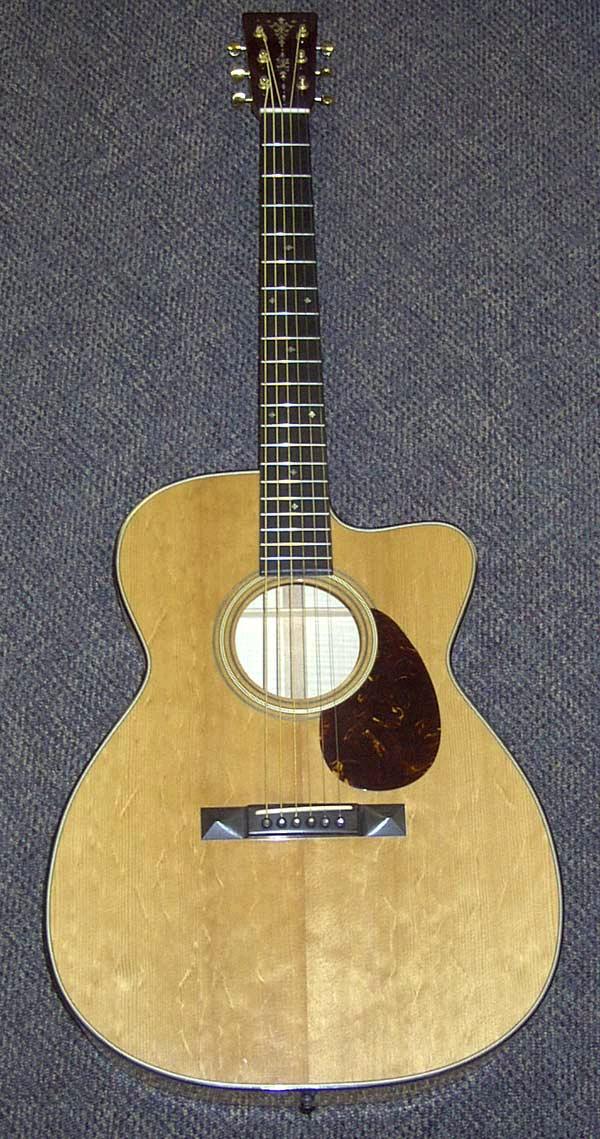
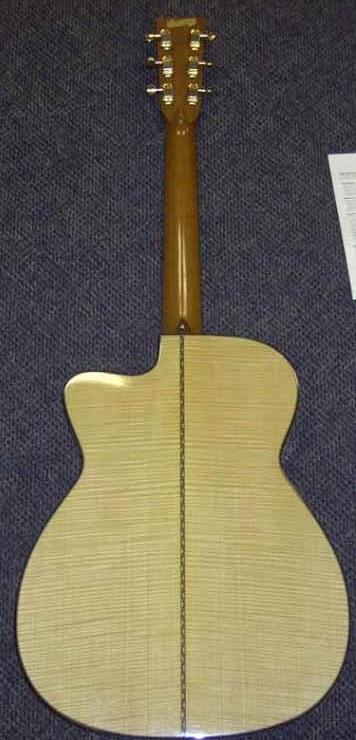
Dana Bourgeois designed the unique
headstock pattern.
Inlay work was done
by acclaimed banjo maker Jimmy Cox, of Topsham, Maine.
This headstock
inlay is known on very few other extant Soloists,
a 1988 non-cutaway, #
482,965:
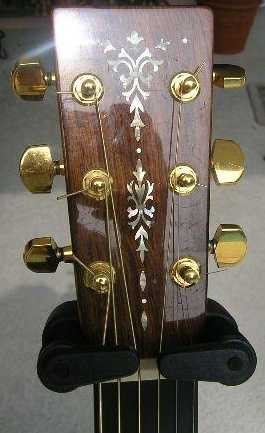
Click here for additional images.
(Note that the bridge is a grossly oversized replacement;
it was not fashioned by T. J. Thompson).
and #
480,793,
formerly owned by Todd
Stuart Phillips and now in the private collection of C.F. Martin IV
(featuring
bearclaw top, maple binding,
Style 45 snowflakes on the fingerboard, and
Style 41 pearl purfling). In a letter dated 7/5/1989, Dana stated that it
was the most ornate Soloist built to date. It was featured on the cover of
the May 1990 issue of ASIA magazine:
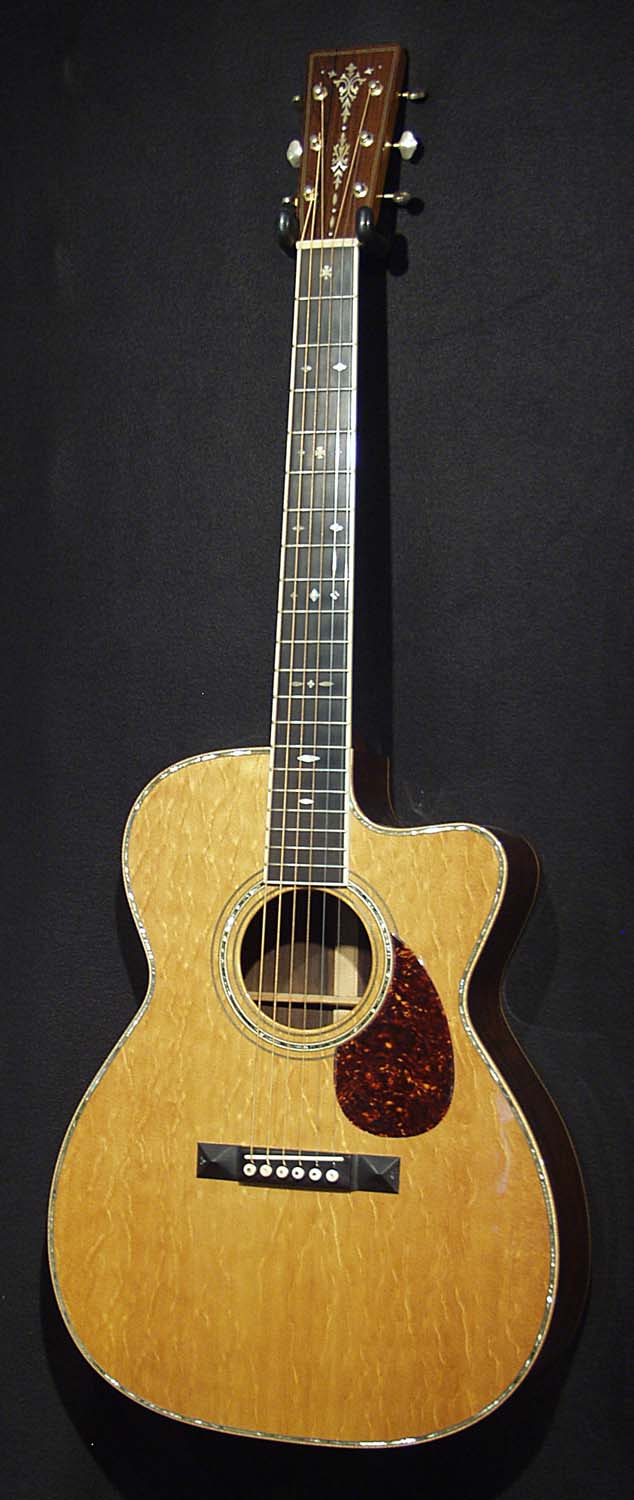
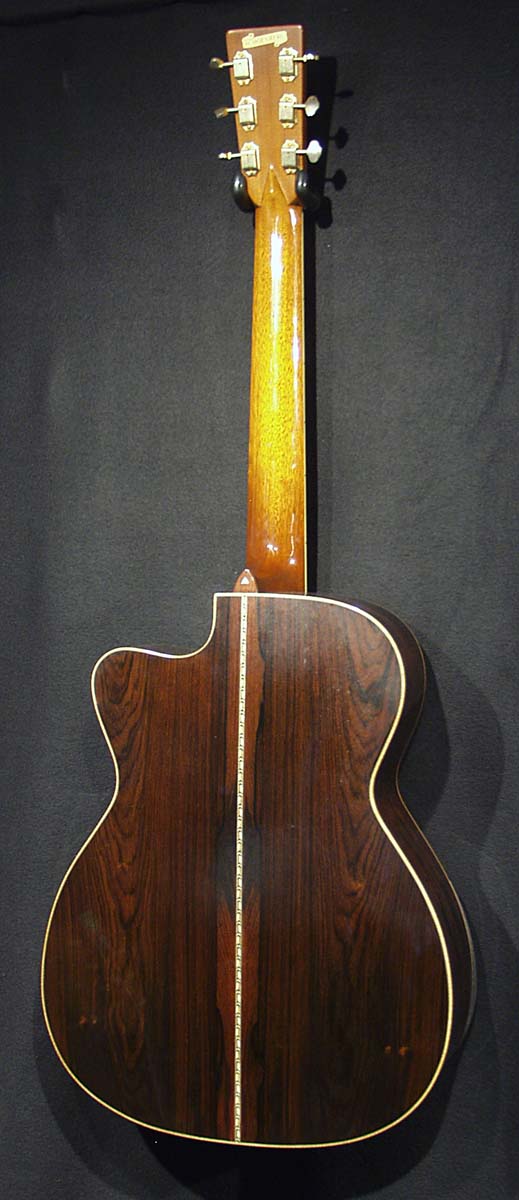
#
490,681
A long-scale (25 1/2")
000 size 12-fret with Bearclaw Englemann Spruce top
and "Spotted Pony" Brazilian
Rosewood back & sides.
This is one of only approximately
five 000 12-fret Schoenbergs made by Dana.
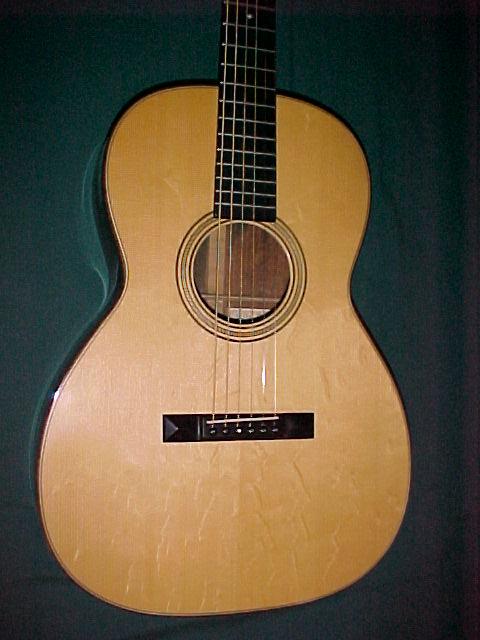
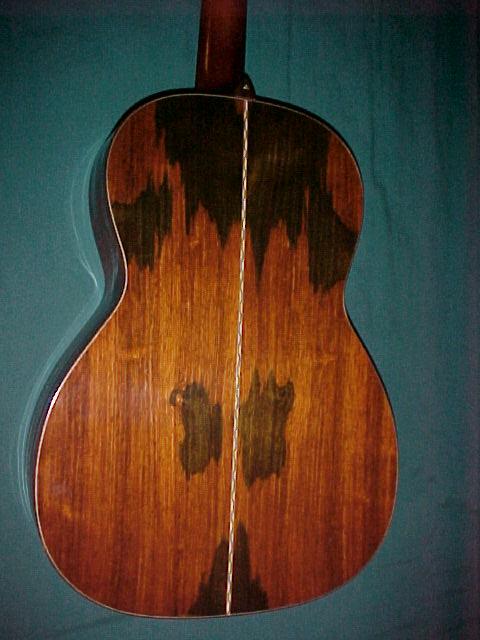
Click here for additional images.
Another of the 12-fret 000 Soloists:

#
490,683
A non-cutaway, deep-bodied
OM with Brazilian Rosewood fretboard & bridge,
and "psychedelic" Brazilian
Rosewood back.

Click
here for additional images.
Another non-cutaway OM Soloist (this one from 1988, with an Adirondack Spruce top):

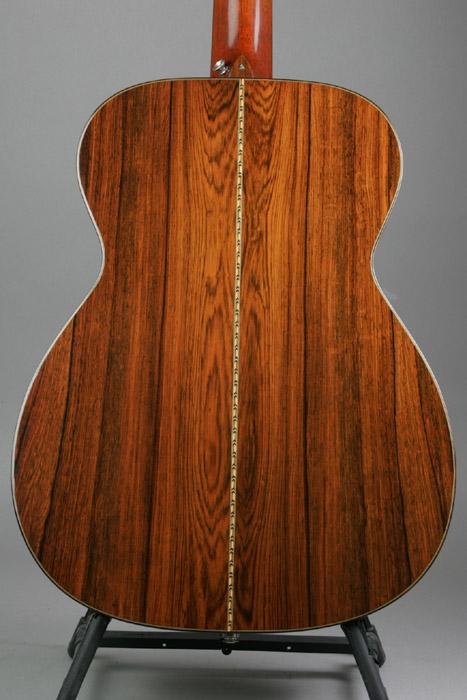
# 490,691
A non-cutaway OM with Koa wood top, back, & sides
(the first Koa topped guitar made by Dana
Bourgeois).
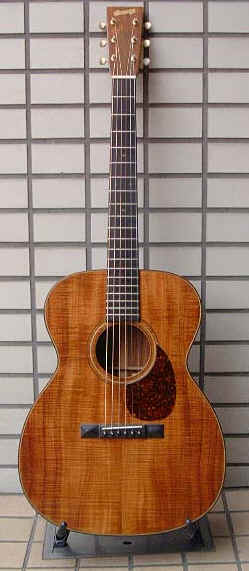
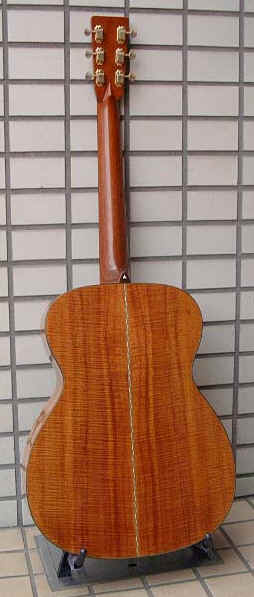
Click here for
additional images.
"I've only built one guitar with a Koa top. The customer wanted the most outrageous, flamed, fancy, dazzling Koa all over, and he really couldn't be interested in spruce. Well, it's against my principles to turn down business, so I started looking for Koa, but I couldn't find anything that sounded like what I thought a top ought to sound like. At every stage of the voicing process I struggled with the guitar to make it sound good. Finally I said, 'This is not happening'. By that time I was already too far into it so I finished the guitar anyhow, hoping not to have to build another one. For some reason the guitar turned out to be a real nice one, and I still don't know why. The finished guitar did not sound like a spruce guitar; it had its own sound, but it was very good". --Dana Bourgeois, quoted in 1990
A Soloist with German Spruce top and Koa back and sides:
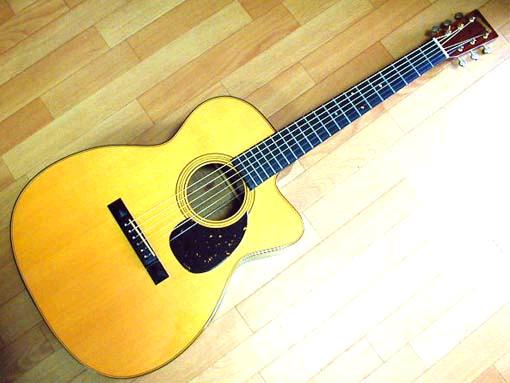
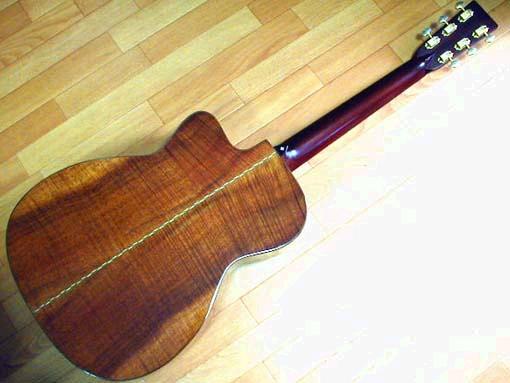
A left handed Soloist:
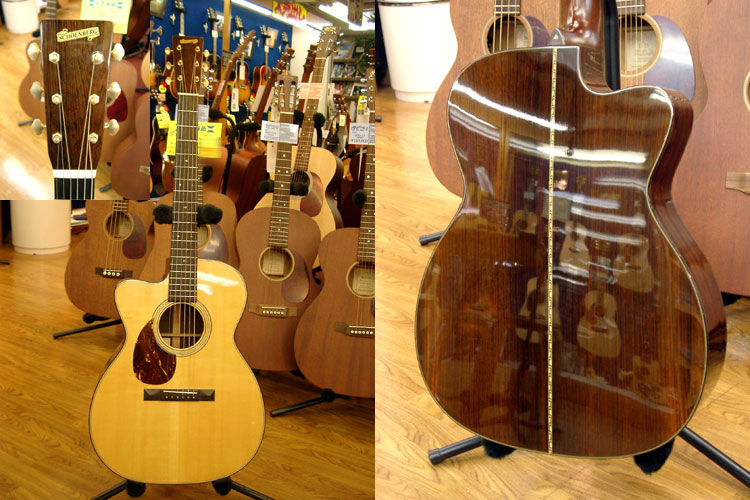
A Guitar World magazine review from October, 1989: